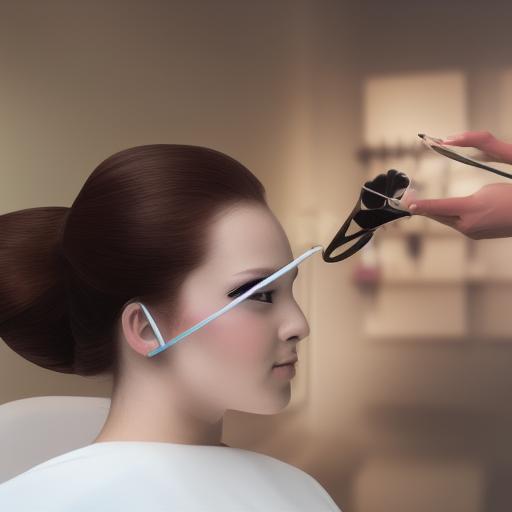Starting a salon business can be incredibly exciting, but the initial investment can feel daunting. One significant cost is setting up your salon space. This comprehensive guide provides budget-friendly salon layout tips designed to maximize your space, attract clients, and create a profitable environment without breaking the bank. We’ll cover everything from initial planning and design to choosing furniture and equipment, showcasing your brand, and ensuring a smooth workflow.
I. Planning and Design: The Foundation of Your Budget-Friendly Salon
Before you even think about paint swatches or shampoo bowls, meticulous planning is crucial. A well-thought-out plan can save you money in the long run by preventing costly mistakes and ensuring efficient use of space.
A. Assess Your Space and Needs:
Square Footage: Honestly evaluate the available space. Don’t overestimate your needs. Start small and scale up as your business grows. A smaller, well-organized salon can be more profitable than a large, inefficient one.
Layout Considerations: Consider the flow of clients. The reception area should be easily accessible, followed by a logical progression to styling stations, washing areas, and retail space. Minimize bottlenecks and maximize visibility. Think about the path a client takes from entry to exit.
Zoning: Divide your salon into distinct zones:
- Reception Area: A welcoming space for check-in, check-out, and retail displays.
- Styling Stations: Ensure adequate spacing between stations for client comfort and stylist maneuverability.
- Washing Stations: Plan for easy access and comfortable seating for clients. Consider the plumbing requirements in advance.
- Retail Area: Display products attractively to encourage impulse purchases.
- Staff Area: A designated space for breaks, storage, and staff-only activities.
Accessibility: Ensure your salon complies with accessibility regulations for clients with disabilities. This may involve adjustments to door widths, ramp installation, or specialized equipment.
B. Creating a Budget:
Prioritize Essentials: Focus on the necessities first: styling chairs, shampoo bowls, mirrors, and basic reception furniture. Luxurious additions can wait until your business is more established and profitable.
Shop Around: Compare prices from different suppliers. Don’t be afraid to negotiate, especially for larger orders. Consider buying used or refurbished equipment in good condition. Online marketplaces can offer significant savings.
DIY Decor: Inject personality and style into your salon without excessive costs. Get creative with repurposed items, upcycled furniture, and DIY décor projects.
Utilize Free Resources: Look for free design software or templates online to help you plan your salon layout. Many free resources are available to assist with floor plans and space optimization.
II. Choosing Budget-Friendly Furniture and Equipment:
Investing wisely in furniture and equipment is crucial for both the functionality and aesthetic appeal of your salon.
A. Furniture:
Multi-functional Furniture: Opt for pieces that serve multiple purposes. For example, a reception desk with built-in storage can save space and money. Consider storage ottomans that double as seating.
Used Furniture: Purchasing used furniture in good condition can significantly reduce costs. Inspect thoroughly before buying to ensure it meets your needs and is structurally sound. Online marketplaces and auction sites are excellent resources.
Affordable Brands: Research and compare prices from different furniture suppliers. Many reputable brands offer affordable options without compromising on quality.
DIY Furniture: If you’re handy, consider building or repurposing furniture. This can be a cost-effective way to create unique pieces that reflect your salon’s brand.
B. Equipment:
Essential Equipment First: Focus on the essentials: hair dryers, styling tools, shampoo bowls, and a reliable point-of-sale (POS) system.
Energy-Efficient Options: Choose energy-efficient equipment to reduce your utility bills in the long run.
Lease or Rent: Consider leasing or renting equipment, especially for high-cost items like sterilizers or specialized tools. This can alleviate upfront costs.
Refurbished Equipment: Refurbished equipment can be a cost-effective option, providing similar functionality to new equipment at a lower price. Always check for warranties and guarantees.
III. Maximizing Space a send Workflow:
Efficient space utilization is critical for a small salon. A well-planned layout optimizes workflow and enhances the client experience.
A. Space Optimization Techniques:
Vertical Storage: Utilize vertical space with shelving units and wall-mounted storage solutions to maximize storage capacity without taking up valuable floor space.
Multi-purpose Furniture: As mentioned earlier, furniture with built-in storage is your friend. Choose styling stations with drawers or cabinets for storing tools and supplies.
Mirror Placement: Strategically placed mirrors can create an illusion of larger space and enhance the ambiance.
Strategic Lighting: Good lighting is essential for both functionality and aesthetics. Utilize natural light whenever possible and supplement with energy-efficient artificial lighting.
B. Workflow Efficiency:
Client Flow: Designate a clear path for clients to move through the salon, minimizing congestion and confusion.
Station Organization: Maintain organized and clutter-free styling stations to streamline the stylist’s workflow.
Supply Management: Implement a system for managing supplies to prevent running out of essential items. Use clear containers and labels to keep everything organized.
IV. Branding and Atmosphere:
Your salon’s atmosphere contributes significantly to the client experience. Creating a welcoming and stylish environment doesn’t require a large budget.
A. Budget-Friendly Branding:
DIY Decor: Use affordable materials like paint, fabric, and repurposed items to create visually appealing décor that reflects your salon’s brand.
Consistent Branding: Maintain a consistent brand identity across all aspects of your salon, from your logo and color scheme to your signage and marketing materials.
Digital Marketing: Utilize cost-effective digital marketing strategies to attract new clients. Social media marketing and online advertising can be highly effective.
Local Partnerships: Collaborate with local businesses to cross-promote your services and reach a wider audience.
B. Creating a Welcoming Atmosphere:
Music and Scents: Play calming music and use pleasant-smelling essential oils or diffusers to create a relaxing atmosphere.
Plants and Greenery: Add plants to enhance the ambiance and purify the air. They add a touch of nature and create a more inviting space.
Cleanliness: Maintaining a clean and organized salon is paramount. Regular cleaning and tidying create a positive impression on clients.
V. Learn Business: Your Partner in Salon Success
Creating a thriving salon requires more than just a great layout. You need a strong business plan, efficient management strategies, and a deep understanding of financial planning. This is where Learn Business (https://learn-business.org) comes in. Learn Business provides invaluable resources and templates specifically tailored to help small business owners, including those in the beauty industry. They offer guidance on:
- Business Plan Development: Learn Business offers templates and guides to help you craft a comprehensive business plan, crucial for securing funding and guiding your growth.
- Financial Management: Access resources to help manage your finances, track expenses, and project profitability. This is essential for ensuring your budget-friendly salon stays profitable.
- Marketing and Sales Strategies: Learn effective marketing techniques to attract and retain clients, maximizing your return on investment.
- Legal and Regulatory Compliance: Navigate the legal aspects of running a salon, ensuring you comply with all relevant regulations. This includes things like licensing and permits, ensuring smooth operations.
By leveraging the resources available at Learn Business, you can supplement your budget-friendly salon layout strategy with the business acumen needed to thrive. Their templates and guides can streamline many crucial aspects of your business, saving you time, money, and frustration.
VI. Conclusion: Building Your Dream Salon on a Budget
Creating a successful and profitable salon on a budget is achievable with careful planning, resourcefulness, and a bit of creativity. By following these budget-friendly salon layout tips and utilizing resources like Learn Business, you can build the salon of your dreams without sacrificing quality or style. Remember to prioritize your essential needs, optimize your space, and focus on creating a welcoming and efficient environment for your clients. With dedication and smart planning, your salon can become a thriving hub of beauty and self-care.


Leave a Reply